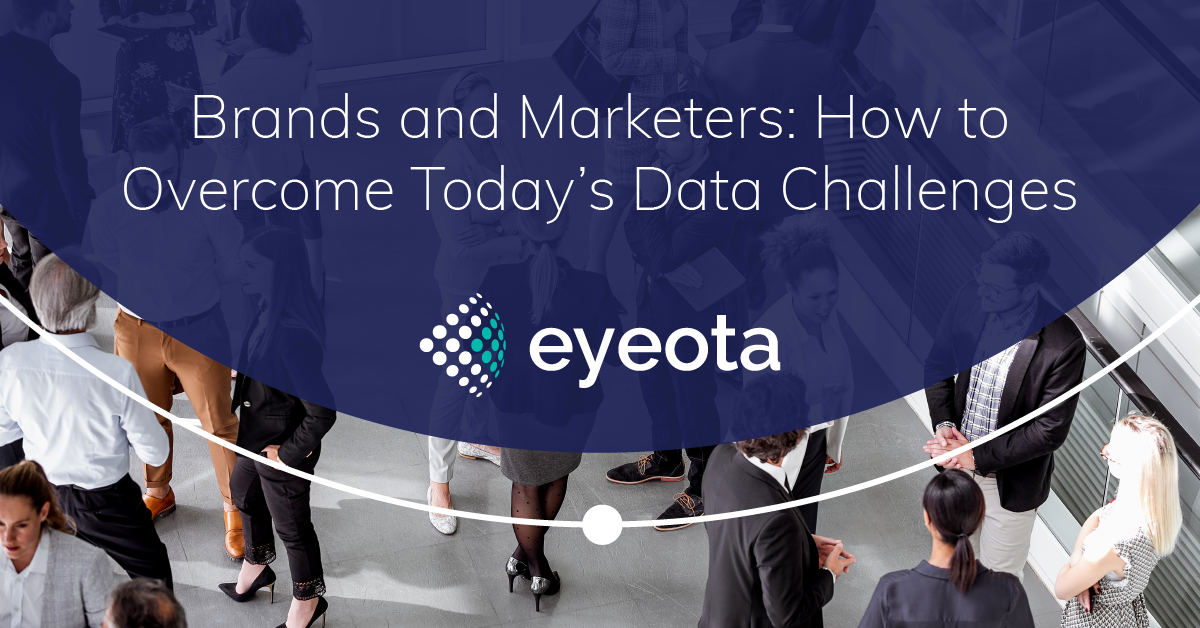Data onboarding has always played a part in brands’ marketing and advertising strategies. However, over the last year or so the level of importance placed on identifying ways to collect and activate first-party data, has massively increased.
In this first blog in a series which explores onboarding, it’s role in an organisations’ data strategy, the benefits it brings, and how brands can execute the process with maximum optimisation, Kristina evaluates how cohort-based onboarding can be used as a primary foundation to create robust first-party data strategies that are consumer-friendly and built to last in a cookie-less world, as well as complying with the new consumer privacy and identity landscape.
Data challenges are increasing
In today’s world, brands must be able to easily bridge real world insights into the digital space, so they effectively communicate with both new and existing customers. All this must also be done while balancing privacy, precision, and performance. There has been a dizzying pace of change in the industry over the past couple of years, and brands must try to navigate this change to maintain their data-focused strategies.
While Google has given cookies a stay of execution for another year, the depreciation of third-party cookies, Apple’s IDFA updates, and the constant evolution of privacy regulations around the world continues.
“The reality is that this pace of change won’t decelerate in the near future,” says Kristina Prokop.
“The challenge with the latest raft of changes is that brands will have to take stock of their data assets and reevaluate all of the strategies, technologies, and methods they have developed over the last couple of decades to ensure they are ready for the future,” she adds.
And this means brands will have to increase their focus on building first-party data strategies which do not rely on third-party cookies, to maintain full control and transparency around privacy and over then impact on consumers.
“For most brands, this is the beginning of a journey….to be honest this is really a journey for the entire data ecosystem. And it will be key to build strategies that are flexible, consumer-friendly, and will be able to accompany your business for years to come,” says Prokop.
Mind the data gap!
A recently Eyeota-commissioned study by Forrester Consulting, into today’s marketing leaders’ data priorities and practices, found that while 70% of decision-makers understand the value of first-party data, almost half (48%) were unable to leverage their first-party data sources effectively, and only 44% were investing in new first-party data platforms or services.
“Brands have to accelerate their investment and focus in order to get in front of the curve instead of lagging behind it,” says Prokop.
The other very real challenge facing brands with their first-party data, according to Prokop, is scale.
“Not every brand has been focused on building out proprietary data assets,” she says. “Many have only been using first-party data for very specific use cases where scale isn’t the goal. They have traditionally used third-party data to provide the scale and maturity that their first-party data lacked.
“With the changes that the data industry now faces, that is no longer feasible. Brands really need to find ways to build scale with their first-party data. But how?”
By rethinking the application of first-party data and then using that as a foundation to build consumer profiles that can be used across multiple disciplines, says Prokop.
Traditional use cases for first-party data have been primarily focused on existing customers and brands use a 1:1 match to locate an offline customer in an online environment data onboarding process. This process has been used to create segments that are utilized for personalization, customer retention, cross-sell, and up-sell opportunities.
What’s next?
Now, as brands look for ways to reduce reliance on third-party data, they need to focus on effective ways to use their first-party data for additional tactics, like driving new customer acquisition. It is time for brands to explore new ways to:
- Scale their first-party data.
- Use this data to drive prospecting and ‘upper funnel’ activity; and
- Use their data to fill knowledge gaps - to improve the customer experience for all customers, not just those who have been easily recognized in a logged-in environment.
In the next blog we’ll take a closer look at these activities and explain what the practical applications are and how to activate data strategies that are based on using varied sources of first-party data to create powerful audience cohorts.
Watch CEO Kristina Prokop discuss Onboarding's Role in Future Proofing Your First Party Data Strategy as a guest on eMarketer's Tech Talk here.

